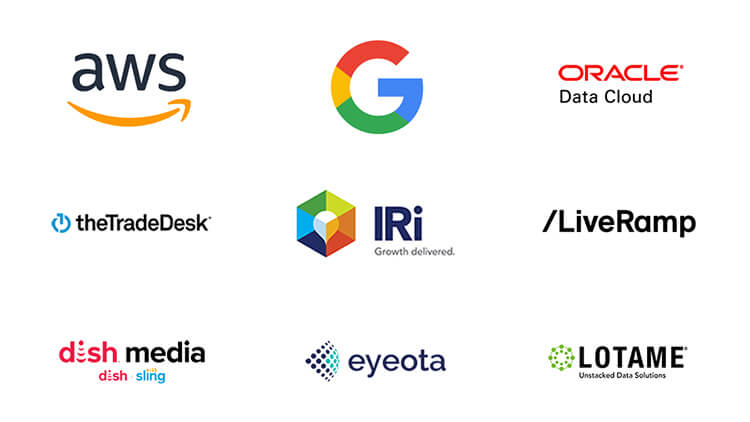Customer segmentation by category
Learn about demographics, geographics, and more to implement in your customer segmentation strategies
At its simplest level, customer segmentation is the practice of looking at your target audience in smaller chunks rather than as one big group. By segmenting your customer base by their demographics, you can develop more focused marketing and forge deeper human connections with your target customers.
With many businesses — perhaps yours included — the product or service offering can become complex or broad-reaching enough that it no longer makes sense to consider your customer base as just one particular type of person. At a certain point, your target audience will become even more diverse than the products and services they purchase from you. As a business owner or a marketer, it makes sense to treat your audience as a diverse group by using customer segmentation.
Customer segmentation forces your messaging to be more attuned to the needs, wants, likes, and dislikes of particular parts of your audience. Generalizing your messaging can get to the point where your business’s unique value proposition gets lost. A properly segmented marketing strategy allows you to hone in on the unique benefits that your products or services have for someone of a certain age, gender, location, or other demographic and focus on answering their questions and addressing their pain points.
When customers feel heard and understood, they are more likely to stick around. By demonstrating through your messaging and customer service that you have the knowledge and ability to meet their needs consistently, you’ll be able to retain those customers who feel like you “get” them and their unique lifestyle.
Customer segmentation allows you to have more of a dialogue with the different subsets of your audience. With better communication with your customers, you’ll get the feedback you need to understand what you’re doing right and where you might be able to improve.
Where traditional marketing casts the widest net possible, digital advertising is all about data and specificity. Since cookies and analytics can pinpoint customer demographics with great accuracy, digital ads can cater to a fairly specific subset of customers. That allows you to serve the ads fewer times for a more potent result, knowing that the creative and strategies you use are tailored to those who will be receptive to them. Less money for better results!
Rather than marketing to the more generalized audiences, consumer type segmentation allows you to dial in on a smaller subgroup of the market as a whole.
It’s less about keeping precise track of the always-changing larger scale of your market’s economics and more about dialing into the relatively consistent needs and desires of your market’s various subgroups.
Simply put, don’t water down your messaging to make it all things for all people. Focus on a more targeted audience and speak directly to them.
There are many different ways to segment customers. While there isn’t a “magic bullet” method of segmentation that works perfectly for all campaigns and markets, you can surely find a way that works for you with some experimentation. Ultimately, the most useful types of customer segments will vary from industry to industry.

Demographics are the various ways of using statistics to group people together to track data and make educated predictions about those people based on their group memberships.
Some of the most commonly used demographics in marketing are a customer’s
Understanding the demographic makeup of your customer base will allow you to predict the buying behaviors more reliably, as well as inform which types of marketing work, and for whom.
Geographic segmentation groups your audience by their physical location in the world. Not only is this a valuable way to segment customers for brick-and-mortar businesses (which are well-served to aim their marketing efforts at those within driving distance), but it can also help e-commerce businesses to localize their marketing campaigns for differences in culture and economics.
While demographics group people by intrinsic aspects of a person’s being and their current living circumstances, psychographics are more focused on the psychological motivators and preferences that certain individuals have. For instance, if you are into classic rock, like Italian food, prefer traveling to sunny locations, and love dogs, these are all examples of psychographic groups that you belong to.
Behavioral segmentation categorizes customers by their online activity and buying behavior. How long does a particular user stay online, and at which hours? When are they logged into the channels you hope to market through? Under what conditions and circumstances are they most likely to purchase something? Knowing these behaviors as they relate to your customer base can be a great way to predict which individuals are more ready to buy so that you can focus your marketing efforts in their direction.
Is your ideal audience viewing your ads on their desktop or a mobile device? Which browser or app did they use to reach you? Knowing the channels through which your customer base is likely to view your content will allow you to optimize your content to the standards and best practices of those channels.
When your business focuses on a B2B market, the demographics of individual people might be a bit too specific for marketing purposes. For more meaningful consumer segmentation in the B2B sense, replace demographics with “firmographics,” the central aspects of a company that categorize and differentiate it from other organizations. For instance, what industry do companies in your target audience belong to? How many employees does the company have? What is their annual revenue?
While a person’s age is a good demographic indicator, what’s even more telling is their life stage. What common experiences or phases are they experiencing at the moment? Are they a college student, a newlywed, a parent to teenagers, empty nesters, etc.? People in each of these life stages have their own particular concerns and needs for products and services, so segmenting by life stage can be a valuable way for you to hone in on certain parts of your market.
Transactional segmentation groups your buyers according to their unique shopping and spending habits. How do they interact with your brand, and how often? When and why are they most likely to buy your products, and what payment methods do they prefer? Segmenting by transaction type and frequency allows you to understand who your most engaged customers are. By understanding who your top spenders are, you can further segment your marketing efforts to tap into your most profitable markets.
Using the criteria above, you can rank the different segments of your audience to determine your overall marketing strategy. There are two main ways to rank the segments of your target audience: needs-based segmentation and value-based segmentation.
Needs-based segmentation looks at the demographic or firmographic information of your customers and takes into account the unique needs that that type of person or company might mention in relation to products and services. Customers are segmented according to the specific needs they express concerning your product.
For example, imagine you sell bicycles. A customer looking for green transportation for their daily commute will have an entirely different use case than a customer who wants to upgrade their mountain bike for outdoor recreation. These two customers would be segmented into different subgroups based on their needs for the product.
On the other hand, value-based segmentation will group your customers according to the revenue they can produce for your company. Continuing with the bicycle example, you might notice that young adults gravitate toward your less expensive models because of limitations in their income. At the same time, more established, middle-aged customers are more willing to spend larger amounts to ensure a certain level of quality. In this case, it’s probably a good idea to subdivide your marketing budget between these two customer groups since selling to one brings in more revenue than the other, so focusing your marketing efforts on a more mature audience might have more profitable results.
Start by making use of public record data that gives you more insight into the demographic, psychographic, behavioral, and geographic makeup of your market. Conduct your own market research through surveys, one-on-one interviews, and focus groups to learn more from your customers firsthand.
Analytics and other digital tools will be beneficial in profiling and tracking how users interact with your online content, giving you a better idea of the type of customers you attract and what you can expect from the interactions.
Take a thorough look at all of your assembled data to start developing a detailed list of your different market segments. What demographics and other distinguishing features stand out among the various groups of people that are drawn to your product? How can you better cater to those individuals?
In what ways does it make sense to segment your customers? What buyer personas do you intend to pursue, and how specifically do you need to target your messaging? Answering these questions will allow you to zero in on the different groups that make up your most interested audiences and, therefore, your most promising sales prospects.

We can help you create marketing strategies catered to the specific preferences and behaviors of your current and prospective customers. We specialize in helping brands discover data-driven insights to make an everlasting impact on consumers.
Our data and identity products and services can help you learn more about customers and target audiences, leverage data resources, improve targeted marketing, create personalized campaigns, and optimize marketing strategies.
With us, you’ll understand your consumers better, make more effective data-informed decisions, and increase your customer base for bigger revenue.

This site is protected by reCAPTCHA and the Google Privacy Policy and Terms of Service apply.